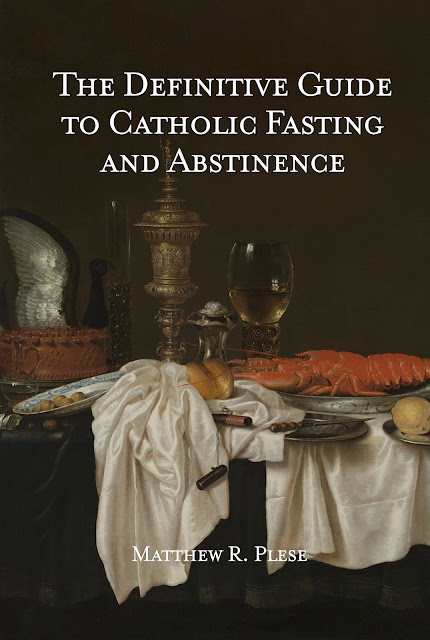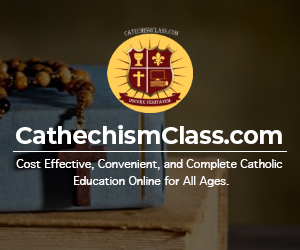Continuing the trend of various All Saint Days for religious orders, November 14th is the Feast of All Saints of the Carmelite Order. Like other major religious orders, the Carmelite Order is blessed with many saints and blessed. It is thanks to the Carmelite Order that we have the Brown Scapular.
Who are the Carmelite Saints? The Order of Carmelites answers:
They are hermits of Mount Carmel who “lived in small cells, similar to the cells of a beehive, they lived as God’s bees, gathering the divine honey of spiritual consolation.” They are mendicants of the first medieval communities, who discovered the presence of God in the events of ordinary daily life and especially seeing God in his brothers and sisters. They are teachers and preachers, missionaries and martyrs who searched for the face of God among the people. They are nuns who have contributed to the growth of God's people by their mystical experience and especially through their fervent prayer and contemplative life. They are religious, who showed us the face of Christ through their apostolate in hospitals or schools, especially in the mission lands. They are laity, who were able to embody the spirit of Carmel and lived that spirit in the midst of the people. Simon Stock, Andrew Corsini, Albert of Trapani, John of Cross, Teresa of Ávila, Thérèse of the Child Jesus, Edith Stein, Titus Brandsma, Angelo Paoli and countless saints and blesseds of Carmel together with Mary, the Mother of Carmel, are now singing a song of praise to the Father in Heaven.
St. Teresa of Avila, St. John of the Cross, St. Therese of Lisieux, St. Teresa of Jesus, Blessed Elizabeth of the Trinity, and many others have reached Heaven through the Carmelite Order.
Today, besides calling to mind all of these saints, we pray for the intercession of all Carmelites - known and unknown - that they especially intercede for all Carmelites on this earth. May everyone in the Carmelite Order - including the many Carmelite Third Order members - grow in sanctity, stay true to the authentic Catholic Faith, and persevere to the end.
Litany of Carmelite Saints
For Private Devotion Only
Lord, have mercy on us.
Christ, have mercy on us.
Lord, have mercy on us.
Christ hear us.
Christ, graciously hear us.
God, the Father of Heaven, Have mercy on us.
God, the Son, Redeemer of the world, Have mercy on us.
God, the Holy Ghost, Have mercy on us.
Holy Trinity, one God, Have mercy on us,
Holy Mary, Pray for us. (* denotes to repeat Pray for us)
Queen of All Saints, *
Mother, Ornament of Carmel, *
Saint Joseph, Protector of Our Order, *
Our Holy Father, the Prophet Elias, who by thy prayer and contemplation laid the foundation of our Order on Carmel,*
Saint Eliseus, who through thy disciples didst preserve the spirit of Elias on Carmel, *
St. Telesphorus, watchful guardian of the Church, *
St. Anastasius, invincible amid the most fearful torments, *
St. Gerard, who didst die a glorious martyr’s death for the spread of the Faith, *
St. Angelus, glorified with the triple crown of Confessor, Virgin and Martyr, *
St. Peter Thomas, great servant and imitator of Mary, who adorned thee with all virtue, and strengthened thee in martyrdom, *
Blessed Dionysius of the Nativity, invincible soldier of Christ and His holy martyr, *
Bl. Redemptus of the Cross, who through thy holy zeal hast earned the martyr’s crown, *
St. Dionysius, zealous believer in the Mystery of the Holy Trinity and the defender thereof, *
St. Serapion, renowned for thy virtue and sanctity, and for thy wisdom and knowledge, *
St. Spiridion, great lover of evangelical simplicity, *
St. Cyril of Alexandria, vigilant defender of Mary, Mother of God, *
St. Albert, our most wise lawgiver and director, *
St. Andrew Corsini, wonderful peacemaker and despiser of worldly honors, *
St. Hilarion, admirable for thy life of prayer and mortification in solitude, and for thy power over evil spirits, *
St. Berthold, who didst unite the dwellers on Carmel into one ecclesiastical Order of Mary, *
St. Brocard, great zealot for the observance of religious discipline, *
St. Cyril of Constantinople, eminent for virtue, wisdom and learning, *
St. Simon Stock, privileged servant of Mary, *
St. Albert of Sicily, exalted model of unspotted purity, *
St. Avertanus, example of perfect obedience, *
St. John of the Cross, Doctor of the Church, and sure guide in the mystical life, *
Bl. Franco Lippi, outstanding for severe mortification and holy silence, *
Bl. Romaeus, model of humble monastic virtue, *
Bl. Angelus Augustine, marvel of eloquence in preaching the Word of God, *
Bl. John Soreth, burning with love of the primitive observance, *
Bl. Aloysius Rabatha, model of holy and severe penance, *
Bl. Jacobinus, renowned for thy profound meekness and great humility, *
Bl. Bartholomew Fanti, burning with love for Jesus in the Blessed Sacrament, *
Bl. Nonius Pereira, loyal servant and devotee of Mary, *
St. Euphrasia, perfect example of obedience, *
St. Euphrosina, wonderful lover of purity, *
St. Teresa, illustrious reformer of Carmel, full of heavenly wisdom, *
St. Mary Magdalen de Pazzi, victim of crucified love, *
St. Therese of the Child Jesus, teacher of the “Little Way” and Patroness of the Missions, *
Bl. Frances of Amboise, noble by birth, but nobler in virtue and steadfast confidence in God, *
Bl. Jane Scopelli, perfect model of prayer and mortification, *
Bl. Archangela, most tender in thy love for Jesus and Mary, *
Bl. Mary of the Incarnation, lover of real meekness, *
Bl. Anne of Saint Bartholomew, one with Teresa in the reform of Carmel, *
Bl. Mary of the Angels, like to the angels in innocence and purity, *
Bl. Jane of Toulouse, admirable for love of solitude and prayer, *
Bl. Therese and Companions, martyrs for Christ in the French Revolution, *
St. Teresa Margaret, great venerator and humble disciple of the Sacred Heart,*
All ye holy Virgins and Matrons of Carmel,*
All ye holy men and women who by thy virtues have given glory to Carmel, *
Lamb of God, Who takest away the sins of the world: Spare us, O Lord.
Lamb of God, Who takest away the sins of the world: Graciously hear us, O Lord.
Lamb of God, Who takest away the sins of the world: Have mercy on us.
V. Pray for us, all ye Saints of Carmel:
R. That we may be made worthy of the promises of Christ.
Let us pray: Almighty and merciful God, Who dost rejoice us by the memory of all the Saints of the Carmelite Order: grant that, inspired by their example and merits, we may live for Thee alone in the continual observance of Thy law and in the perfect abnegation of self, and that we may attain to perfect happiness with them in heaven. Through Christ Our Lord. Amen


.jpg)






















